Might be a fast code, as there is no counting involved.
Live test: https://www.db-fiddle.com/f/dBdH9tZd4W6Eac1TCRXZ8U/0
select *
from tbl outr
where not exists
(
select 1 / 0 -- just a proof that this is not evaluated. won't cause division by zero
from tbl inr
where
inr.id <> outr.id
and right(inr.value, 6) = right(outr.value, 6)
)
Output:
| id | value |
| --- | --------------- |
| 2 | aaaaaaaaaaaaaa |
| 4 | aaaaaaaaaaaaaaB |
| 5 | Hello |
The logic is to test other rows that is not equal to the same id of the outer row. If those other rows has same right 6 characters as the outer row, then don't show that outer row.
UPDATE
I misunderstood the OP's intent. It's the reversed. Anyway, just reverse the logic. Use EXISTS instead of NOT EXISTS
Live test: https://www.db-fiddle.com/f/dBdH9tZd4W6Eac1TCRXZ8U/3
select *
from tbl outr
where exists
(
select 1 / 0 -- just a proof that this is not evaluated. won't cause division by zero
from tbl inr
where
inr.id <> outr.id
and right(inr.value, 6) = right(outr.value, 6)
)
Output:
| id | value |
| --- | ----------- |
| 1 | abcdePuzzle |
| 3 | abcPuzzle |
UPDATE
Tested the query. The performance of my answer (correlated EXISTS approach) is not optimal. Just keeping my answer, so others will know what approach to avoid :)
GhostGambler's answer is faster than correlated EXISTS approach. For 5 million rows, his answer takes 2.762 seconds only:
explain analyze
SELECT
tbl.*
FROM
(
SELECT
RIGHT(value, 6) AS ending
FROM
tbl
GROUP BY
ending
HAVING
COUNT(*) > 1
) grouped
JOIN tbl ON grouped.ending = RIGHT(value, 6)

My answer (correlated EXISTS) takes 4.08 seconds:
explain analyze
select *
from tbl outr
where exists
(
select 1 / 0 -- just a proof that this is not evaluated. won't cause division by zero
from tbl inr
where
inr.id <> outr.id
and right(inr.value, 6) = right(outr.value, 6)
)

Straightforward query is the fastest, no join, just plain IN query. 2.722 seconds. It has practically the same performance as JOIN approach since they have the same execution plan. This is kiks73's answer. I just don't know why he made his second answer unnecessarily complicated.
So it's just a matter of taste, or choosing which code is more readable select from in vs select from join
explain analyze
SELECT *
FROM tbl
where right(value, 6) in
(
SELECT
RIGHT(value, 6) AS ending
FROM
tbl
GROUP BY
ending
HAVING
COUNT(*) > 1
)
Result:

Test data used:
CREATE TABLE tbl (
id INTEGER primary key,
value VARCHAR(20)
);
INSERT INTO tbl
(id, value)
VALUES
('1', 'abcdePuzzle'),
('2', 'aaaaaaaaaaaaaa'),
('3', 'abcPuzzle'),
('4', 'aaaaaaaaaaaaaaB'),
('5', 'Hello');
insert into tbl(id, value)
select x.y, 'Puzzle'
from generate_series(6, 5000000) as x(y);
create index ix_tbl__right on tbl(right(value, 6));
Performances without the index, and with index on tbl(right(value, 6)):
JOIN approach:
Without index: 3.805 seconds
With index: 2.762 seconds

IN approach:
Without index: 3.719 seconds
With index: 2.722 seconds






